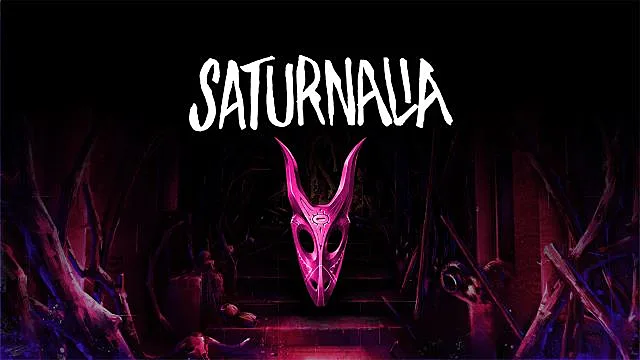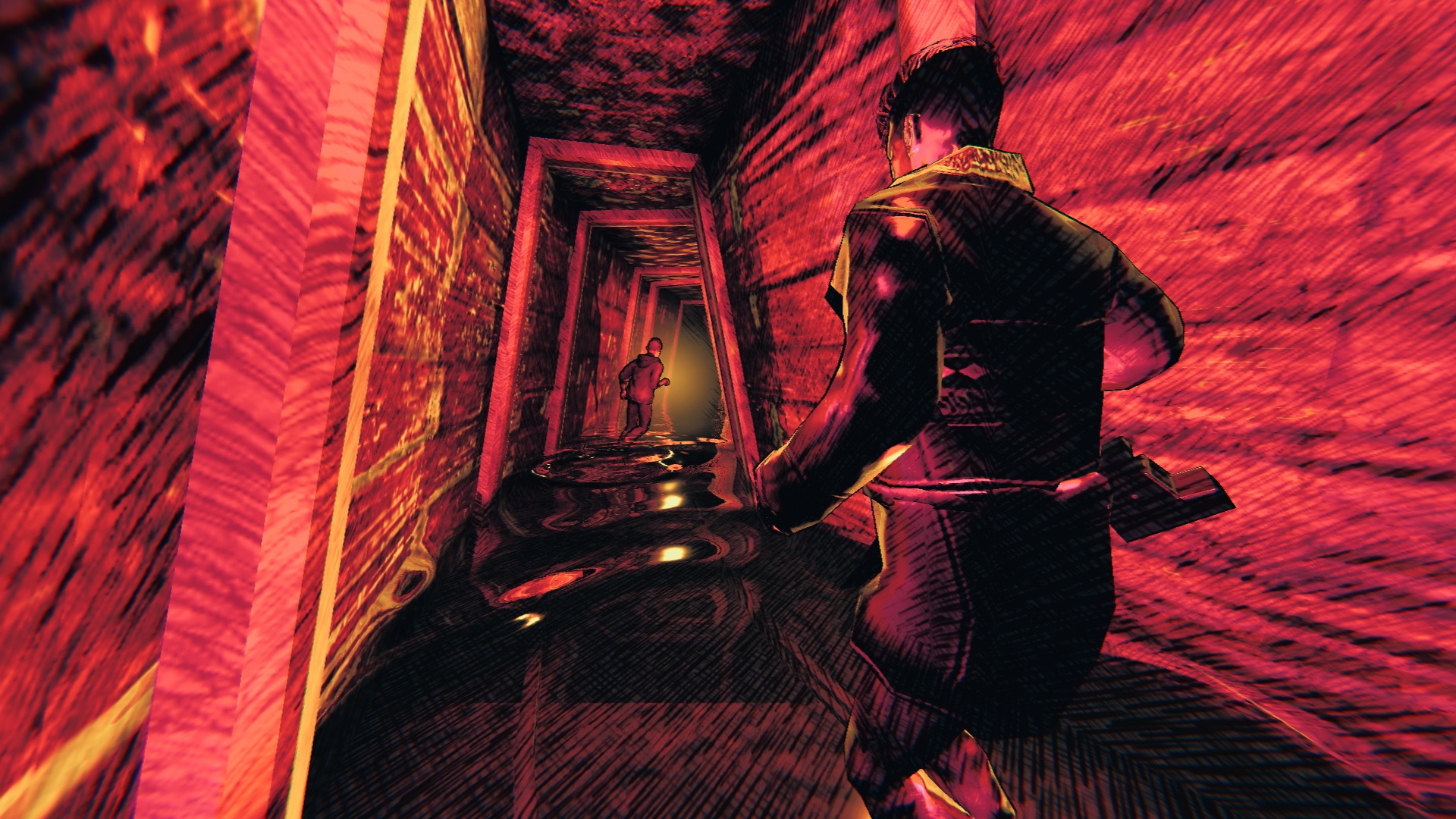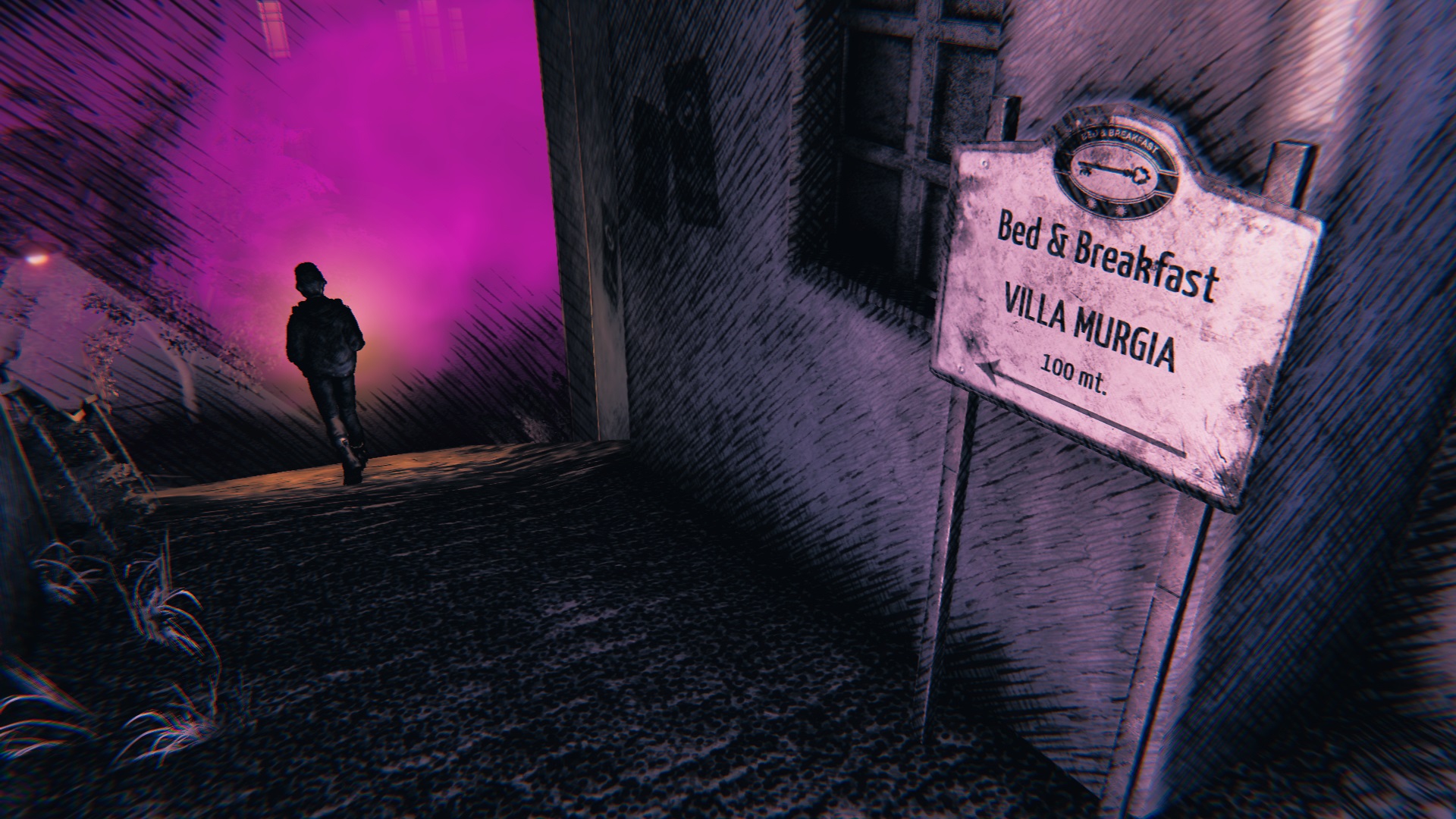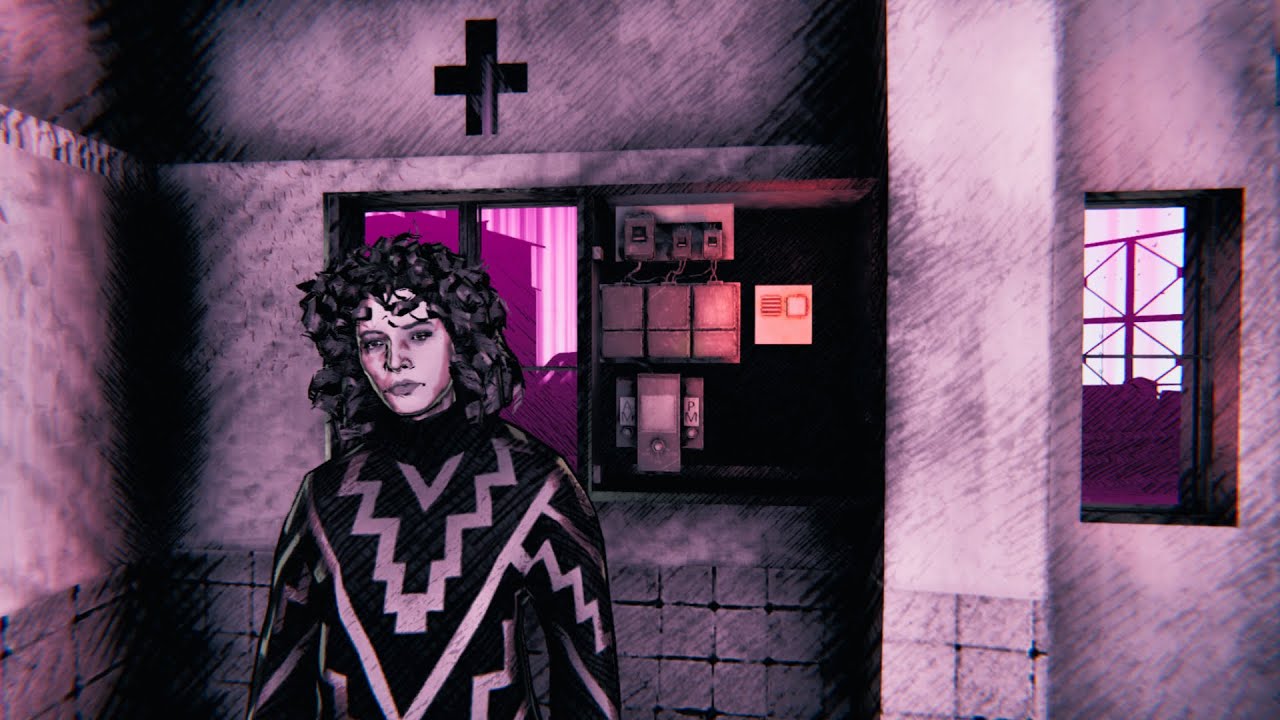It starts on the title screen. The fear. A woman whispers in a language I don’t understand. Strange sounds move around her voice. I haven’t even started playing Saturnalia, and I’m already unsettled. It’s at this point I know this game is going to be something special.
Jointly developed by Santa Ragione and Big Trouble Game Studio, Saturnalia is a unique take on the survival horror genre, mixing roguelike elements with incredible art design and an ambitious narrative to create a game that’s quite unique – even if it may not seem that way at first.
Saturnalia is set in Sardinia, a culturally rich region of Italy known for its unique folklore, which features in the plot. The story takes place in the fictional mining town of Gravoi. Initially, we follow Anita, a geologist who has spent the last year surveying the mine to see if it can be reopened at the behest of a prospective buyer. Unfortunately, reopening the mine has awakened… something that begins to stalk the town. I won’t say more because I don’t want to spoil anything; you really should go in with as little information as possible.
Over time, you’ll unlock more characters, ultimately ending up with four in total. Each has a different ability. As a geologist, Anita has a map of the mine and can memorize the way to any point in town you’ve previously visited. Paul is a photojournalist with a camera who can take pictures of clues and stun the creature stalking the town with the camera’s flash. Sergio has a satellite phone – Saturnalia takes place in 1989 – and can call for backup from the other characters from almost anywhere. Claudia, small and thin, can squeeze through gaps other characters can’t.
Each character also has their own story driving them forward. Anita has been having an affair with a married man and has to decide whether to leave the town or stay and try to start a family. Paul is returning to the town to learn more about his late parents. Sergio is a former drug addict who left the town years ago after the end of a relationship with an older man and has come back for closure. Claudia is the daughter of a local bar owner dealing with the strange circumstances surrounding her aunt’s suicide.
Characters progress their stories independently of one another, so it’s possible to complete the game with any combination of them done – or any combination of characters alive. There are multiple endings depending on who lives and what you accomplish. You’ll want to do them all, but two things stand in your way: the town itself, and the creature chasing you.
The creature is terrifying. Its approach is accompanied by a rattling sound, like the loudest version of the world’s angriest rain catcher. It’s terrifying the first time you hear it and loses none of its power as the game progresses. As it gets closer, the sound becomes louder and louder, and when it’s close, you can see its silhouette in the dark.
It’s scary to see the creature, but worse to hear it because you don’t know where it is. You only know that it’s near you, and it’s coming. You cannot fight it; your only options are to run and hope you lose it, or hide.
Being found doesn’t mean death – at least, not right away. You’ll immediately switch to another character, and have a limited amount of time to save the one that got grabbed. Fail to do so, and they’re gone. And this is where the town comes into play. Gravoi is a claustrophobic, sprawling place, stacked upon itself and full of dead ends, side streets, and confusing pathways. Navigating it feels like stepping into a labyrinth, no matter how many times you’ve walked it.
In the dark, it’s foreboding and challenging. You can only see a few feet in front of you without lighting a match, one of several limited resources you have to manage. Some things help – maps dot several of the street corners, and you can light bonfires scattered throughout the town for light and landmarks – but every match, and the coins it takes to buy them and other resources, is almost always spent in the mines, where light is precious and rare.
This feeling of helplessness and being limited weighs on you as time wears on and resources become scarcer and scarcer. Every match spent walking across the map, every trip to acquire another resource, is anxiety-inducing because you’re not only spending resources but risking another encounter with the creature.
You can team up with other characters and travel together for access to everyone’s special abilities, but doing so makes more noise, as does opening doors and doing just about everything else. And the more noise you make, the more you risk attracting the creature. You have to constantly weigh the risk of traveling alone and running into an obstacle your current character can’t deal with, and increasing the risk of attracting the creature. Both can be frustrating and set you back, but which trade-off is worth it is up to you.
As you progress, each trip becomes a test of endurance. You’ll want to follow up on the clues you find, but is another trip to the mines or the church worth the potential outcome? I often found myself having to work up the courage to attempt to see everyone’s story through. Worse still, memorizing the town’s layout means nothing; losing every character completely resets the town’s layout. Thankfully, you’ll keep any clues – handily sorted into an interactable mission screen and connected by lines to show how they’re related – and story progress if find yourself so unlucky.
The whole thing is wrapped up in beautiful art. Everything looks like it was hand-sketched. Heavy lines outline the characters and buildings, merging with the deep darkness of the night and the neon-pink fog that covers much of the town. The visual design – a mix of inspiration from Giallo films, theatre, stop-motion animation, and roto-scoping – achieves an arthouse style that feels effortlessly cinematic, and the excellent sound design, which draws on ancient music and sounds, makes Saturnalia an audio and visual joy, even at its most terrifying.
Saturnalia also deserves praise for its accessibility options. You can control almost every facet of it, from whether or not the village resets on death to how aggressive the creature is in hunting you, or whether or not you have infinite matches or an auto-walk to location system. You can even enable permadeath. This allows players to customize the settings to their liking individually or via a series of presets.
Saturnalia Review — The Bottom Line
Pros
- Stylish visual and sound design.
- Compelling story and characters.
- Accessibility options allow you to manage difficulty and scares.
Cons
- The odd audio or visual bug.
- Navigating the town can be frustrating.
- It might be too scary for some.
Saturnalia isn’t a long game; you can complete the whole thing in a dozen hours, and often fewer, depending on how you play, but it’s a memorable experience nonetheless. It uses horror in smart ways to explore social topics – the town’s isolation, resistance to change and to outsiders, and the ugly social beliefs that those things inform.
Those facets combine perfectly to make a game that isn’t just horrifying because of the monsters that stalk us in the night. It’s horrifying because of the monsters we make, too – and the things we’re capable of becoming.
[Note: Santa Ragione provided the copy of Saturnalia used for this review.]













Published: Oct 28, 2022 10:07 pm